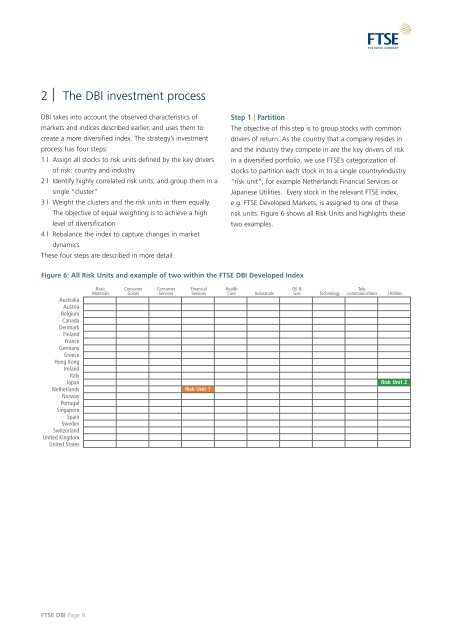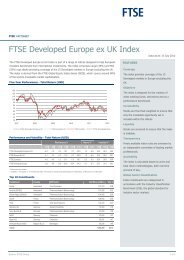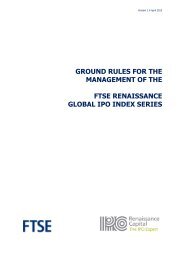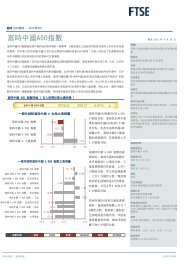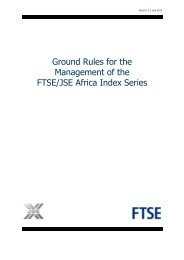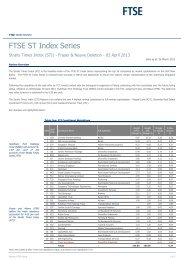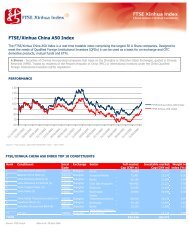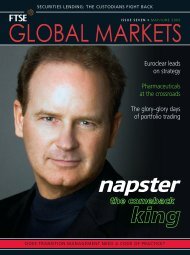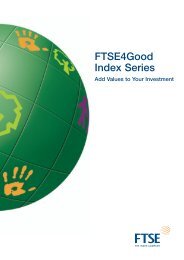QS Investors Diversification Based Investing Whitepaper - FTSE
QS Investors Diversification Based Investing Whitepaper - FTSE
QS Investors Diversification Based Investing Whitepaper - FTSE
You also want an ePaper? Increase the reach of your titles
YUMPU automatically turns print PDFs into web optimized ePapers that Google loves.
2 | The DBI investment process<br />
DBI takes into account the observed characteristics of<br />
markets and indices described earlier, and uses them to<br />
create a more diversified index. The strategy’s investment<br />
process has four steps:<br />
1 | Assign all stocks to risk units defined by the key drivers<br />
of risk: country and industry<br />
2 | Identify highly correlated risk units, and group them in a<br />
single “cluster”<br />
3 | Weight the clusters and the risk units in them equally.<br />
The objective of equal weighting is to achieve a high<br />
level of diversification<br />
4 | Rebalance the index to capture changes in market<br />
dynamics<br />
These four steps are described in more detail.<br />
<strong>FTSE</strong> DBI Page 8<br />
Step 1 | Partition<br />
Figure 6: All Risk Units and example of two within the <strong>FTSE</strong> DBI Developed Index<br />
Australia<br />
Austria<br />
Belgium<br />
Canada<br />
Denmark<br />
Finland<br />
France<br />
Germany<br />
Greece<br />
Hong Kong<br />
Ireland<br />
Italy<br />
Japan<br />
Netherlands<br />
Norway<br />
Portugal<br />
Singapore<br />
Spain<br />
Sweden<br />
Switzerland<br />
United Kingdom<br />
United States<br />
Basic<br />
Materials<br />
Consumer<br />
Goods<br />
Consumer<br />
Services<br />
Financial<br />
Services<br />
Risk Unit 1<br />
The objective of this step is to group stocks with common<br />
drivers of return. As the country that a company resides in<br />
and the industry they compete in are the key drivers of risk<br />
in a diversified portfolio, we use <strong>FTSE</strong>’s categorization of<br />
stocks to partition each stock in to a single country/industry<br />
“risk unit”, for example Netherlands Financial Services or<br />
Japanese Utilities. Every stock in the relevant <strong>FTSE</strong> index,<br />
e.g. <strong>FTSE</strong> Developed Markets, is assigned to one of these<br />
risk units. Figure 6 shows all Risk Units and highlights these<br />
two examples.<br />
Health<br />
Care Industrials<br />
Oil &<br />
Gas Technology<br />
Telecommunications<br />
Utilities<br />
Risk Unit 2


